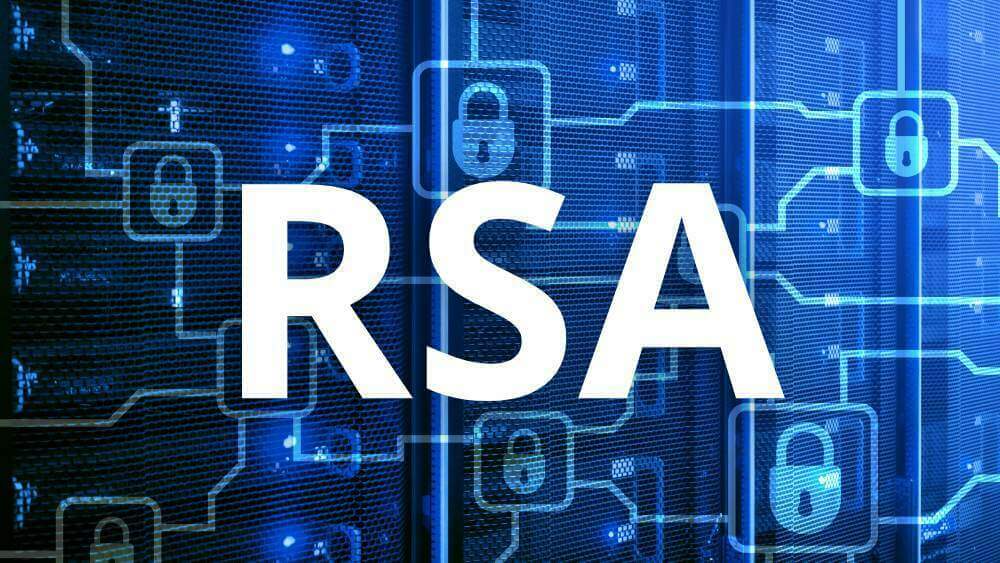
RSA (named after its inventors, Ron Rivest, Adi Shamir, and Leonard Adleman) is a widely-used public-key cryptography algorithm. It is used to secure sensitive information, such as financial transactions and communications, by encrypting the data in such a way that it can only be decrypted by someone with the correct private key.
In RSA, a user generates a pair of keys, a public key and a private key, which are mathematically related. The public key can be shared with anyone, while the private key must be kept secret. When someone wants to send a message to the user, they can use the user’s public key to encrypt the message. The user can then use their private key to decrypt the message. This allows for secure communication, as only the user with the correct private key can decrypt the message.
Usage
Here are a few examples of programs that use RSA:
- Web browsers: Many web browsers use RSA to secure communication over the internet. The Secure Sockets Layer (SSL) protocol, which is used to secure web traffic, uses RSA to establish an encrypted connection between the client (web browser) and the server.
- Email programs: Some email programs, such as Microsoft Outlook and Mozilla Thunderbird, use RSA to secure email messages. This allows users to send and receive messages that are encrypted and can only be read by the intended recipients.
- Virtual private network (VPN) software: RSA is commonly used to secure communication over VPNs, which allow users to connect to a private network over the internet. VPNs use RSA to establish an encrypted connection between the client (the user’s device) and the server, which helps to protect against snooping and other types of attacks.
- Secure file transfer protocols: RSA is often used in secure file transfer protocols, such as Secure File Transfer Protocol (SFTP) and Secure Shell (SSH), to establish an encrypted connection between the client and server. This allows users to transfer files securely over the internet.
- Digital signature systems: RSA is used in digital signature systems, such as the Pretty Good Privacy (PGP) system, to create and verify digital signatures. Digital signatures are used to authenticate the identity of the sender and to ensure that the message has not been tampered with during transit.
Vulnerabilities
While RSA is considered to be a very secure algorithm, it is not completely foolproof and there are a few vulnerabilities that have been identified:
- Key generation: RSA relies on the generation of strong, random keys in order to provide secure encryption. If the keys are not properly generated or are weak, it can make the encryption vulnerable to attacks.
- Key length: The security of RSA encryption is directly related to the length of the keys. The longer the keys, the more secure the encryption. However, longer keys also result in slower encryption and decryption. As a result, there is a trade-off between security and performance when it comes to key length.
- Key management: RSA relies on the private key being kept secret in order to provide secure encryption. If the private key is compromised or stolen, it can allow an attacker to decrypt the encrypted data. This means that it is important to properly manage and protect the private key.
- Side-channel attacks: RSA is vulnerable to side-channel attacks, which are attacks that exploit information that is leaked through the physical implementation of the algorithm, rather than the algorithm itself. Examples of side-channel attacks include power analysis attacks and timing attacks.
RSA vs AES
RSA and AES (Advanced Encryption Standard) are two different types of encryption algorithms that are commonly used to secure sensitive information, such as financial transactions and communications.
RSA is a public-key cryptography algorithm that is used to secure communication by encrypting the data in such a way that it can only be decrypted by someone with the correct private key. RSA is considered to be very secure, but it can be relatively slow compared to some other algorithms and is more suitable for small amounts of data, such as the encryption of short messages or the establishment of secure connections.
AES, on the other hand, is a symmetric-key cryptography algorithm that is used to encrypt and decrypt data. It uses the same key for both encryption and decryption, which makes it faster than RSA. AES is suitable for encrypting large amounts of data, such as files or entire disk drives. It is widely used in a variety of applications, including secure communication, file encryption, and disk encryption.
In general, RSA is more suitable for securing communication and establishing secure connections, while AES is more suitable for encrypting and decrypting large amounts of data. Both algorithms are widely used and are considered to be very secure.
